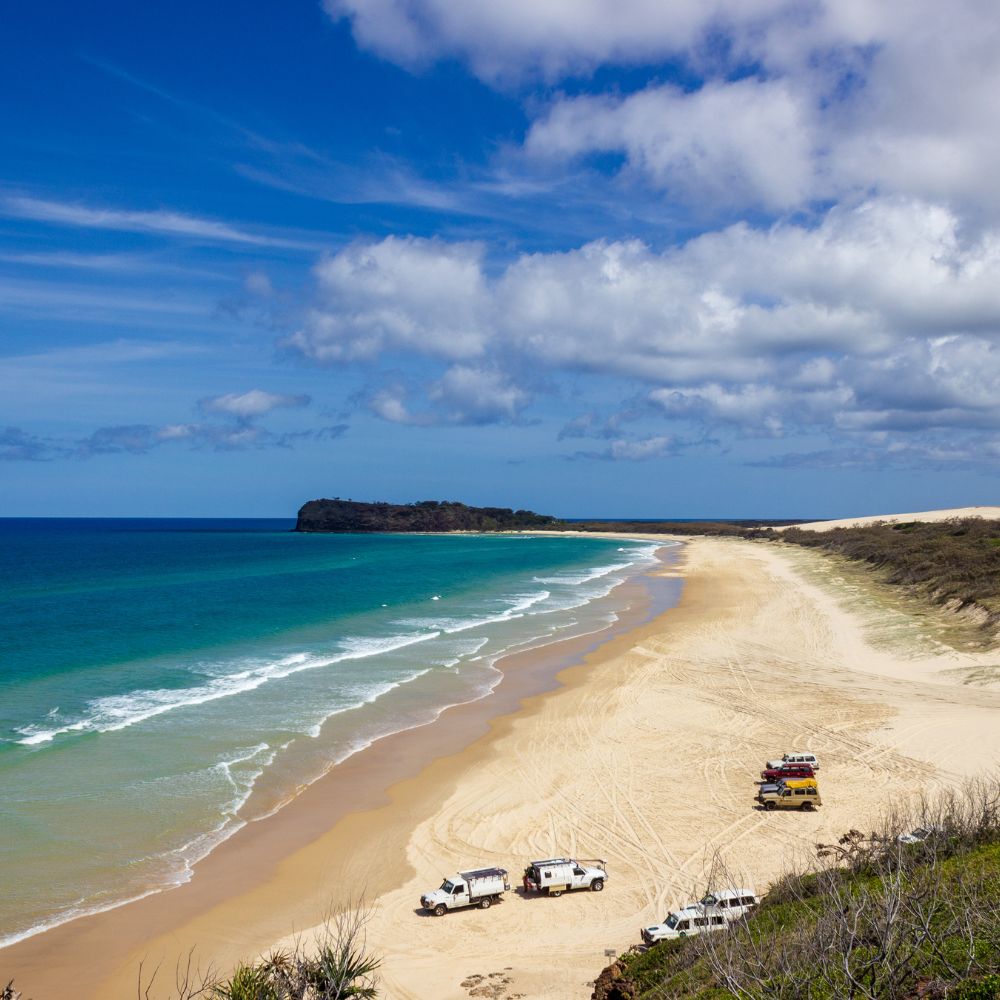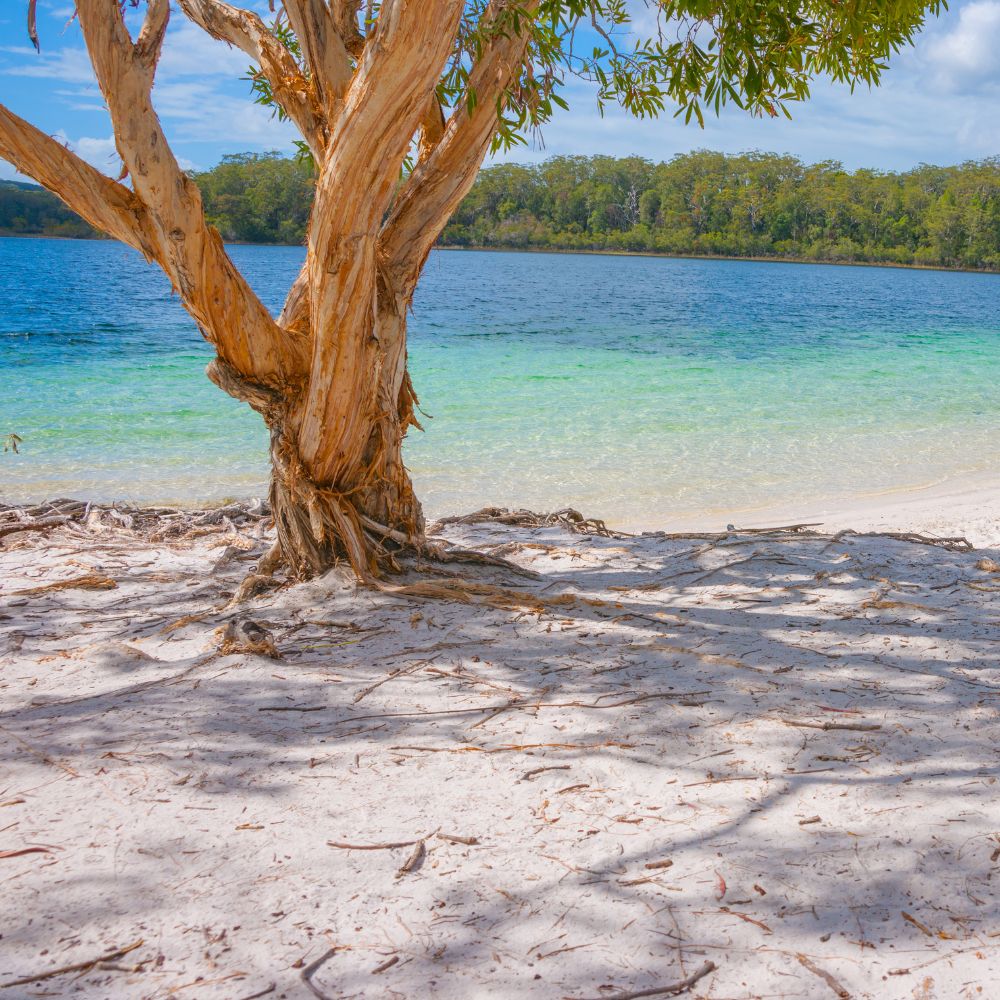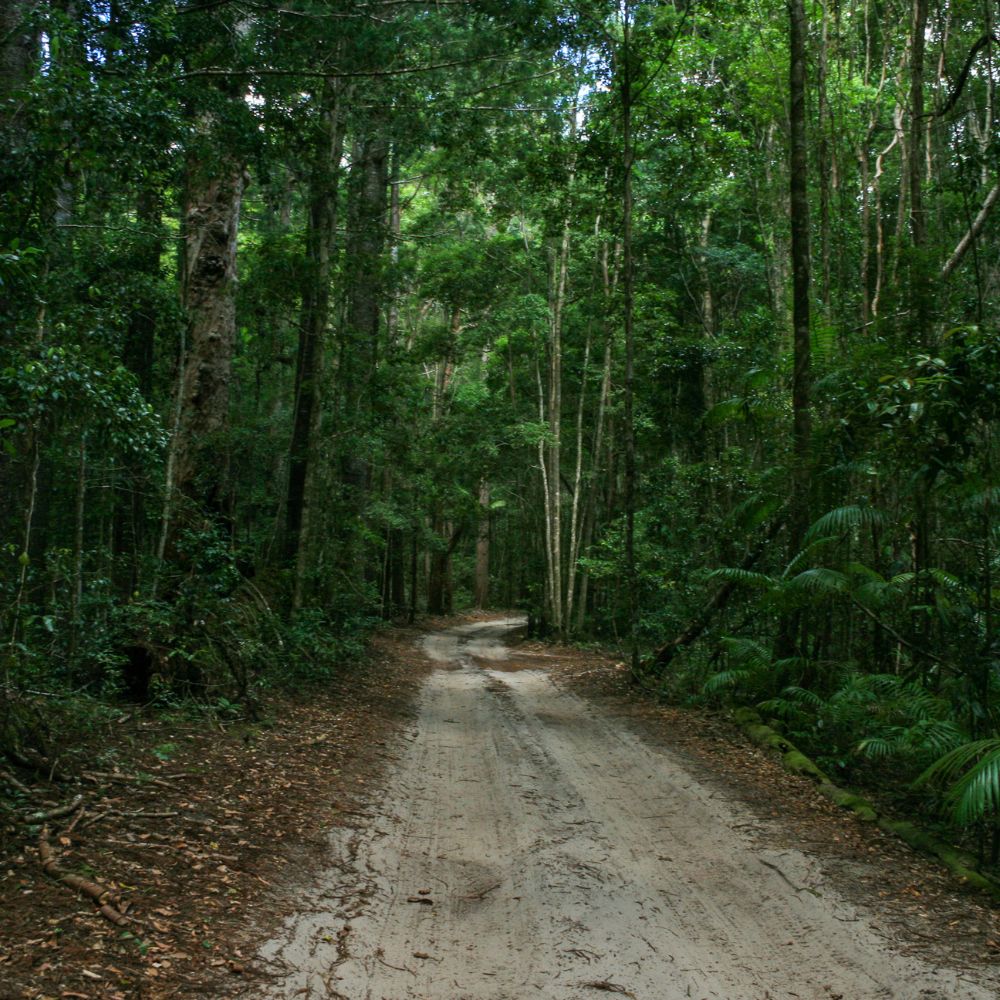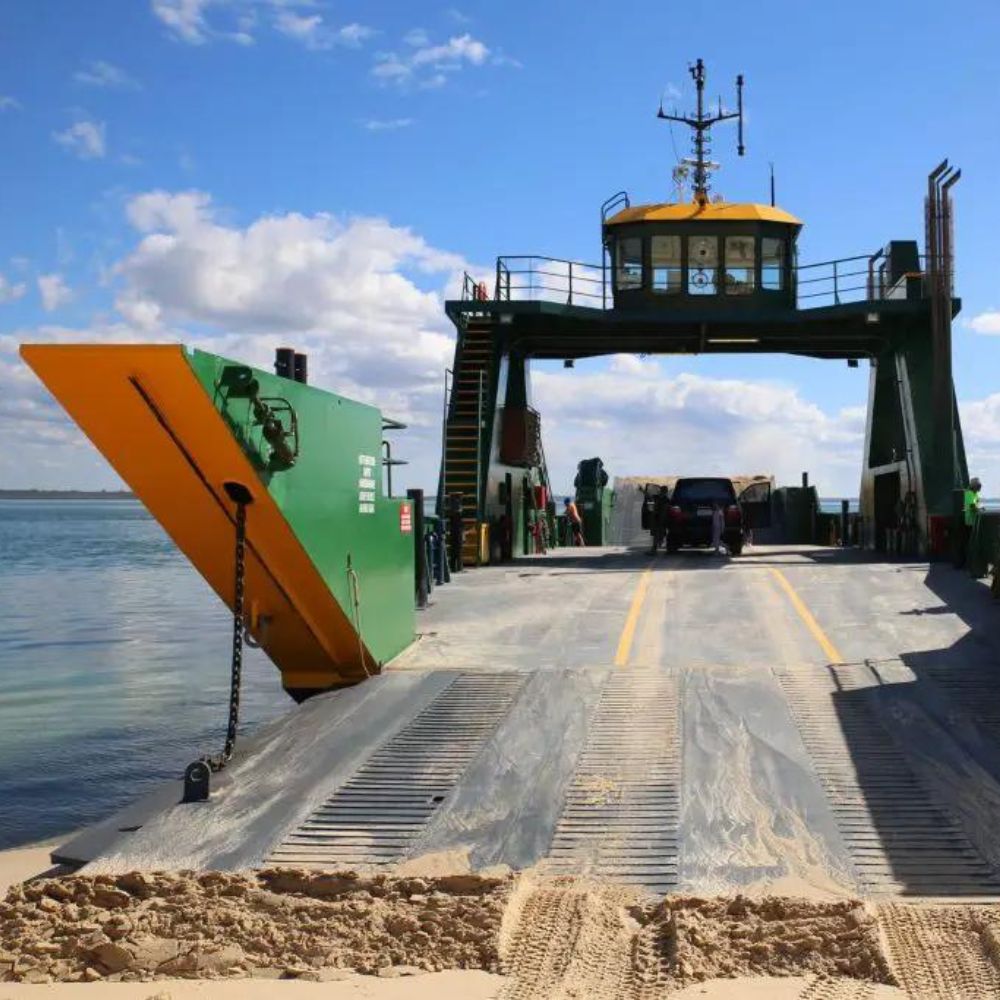What to expect
When you stay on Fraser Island
Fraser Island is a mesmerising blend of pristine beaches, lush rainforests, and rich Aboriginal heritage. Staying here offers a dive into nature’s untouched beauty, perfect for adventurers and relaxation-seekers alike.


Tidal Times
Understanding the tidal times on Fraser Island is crucial for safe exploration, ensuring you avoid getting caught in rising waters and optimising beach drives during low tides. Being tide-aware enhances your experience while preserving the island’s delicate ecosystem.
Please click onto the link to direct you to Fraser Island’s Eastern Beach Tidal Times.
National Park Permits
Before driving on Fraser Island, you must secure a Vehicle Access Permit. Acquire this permit prior to your arrival, as they’re unavailable once on the island. For The Great Walk campsites, reservations are mandatory, and you should pre-determine your nightly camping locations. If you’re considering beach camping, zone-specific bookings are necessary. Kindly consult the Parks Website for detailed information on Camping Zones.


The Dingoes & Local Wild Life
On Fraser Island (K’gari), spotting a dingo is a unique experience as it offers a glimpse into their near-natural habitat. These dingoes, among Australia’s purest wild strains, shouldn’t be mistaken for domestic pets. Their conservation is vital to maintain their wild nature, without dependence on human handouts.
Dingoes play a crucial role in Fraser Island’s ecosystem, with diets ranging from fish, crabs, and reptiles to bush rats, swamp wallabies, and bandicoots. They also forage the beaches for marine life and carrion.
Feeding or disturbing dingoes on Fraser Island, whether on public or private land, is illegal and punishable.
For your safety:
- Never feed dingoes.
- Always keep children close.
- Observe and photograph from a distance; preferably stay in your vehicle.
4WD Fraser
Driving on Fraser Island’s sandy terrains is an exciting 4WD adventure but is different from regular road driving.
It’s recommended to use high-clearance 4WDs, ideally with low-range gears. For sand driving, lock hubs, engage 4WD, and opt for low range in soft, dry sand. Lowering tyre pressure enhances traction; avoid abrupt turns and braking. Before returning to standard roads, reinflate tyres and disengage 4WD.
While normal road rules from the mainland apply, keep in mind: 80 kph speed on beaches and 30 kph on tracks. Always use seatbelts, indicate, and stay left for oncoming beach traffic. Avoid driving during high tide, and stick to firm sand between the waterline and high tide mark. Be cautious during creek crossings and be aware of nesting wildlife, especially birds.
Also, night-time beach driving is discouraged due to poor visibility. Hazards include rocks, water pools, washouts, and aircraft landing zones. Always be aware of pedestrians and park wisely.
Inland tracks are often single-laned. Use passing bays, give way to downhill traffic, and heavier vehicles get priority.
Essentials to pack: a functional tyre gauge, air pump, water, tow rope, shovel, traction mats, and spare keys—losing them on the island can be costly.


Taking the Barge
Manta Ray Barge, a local Fraser Island service, operates daily from Inskip Pt (near Rainbow Beach) to Fraser Island’s Hook Point, running throughout the year. The 10-minute journey is available from 6:00 am – 5:30 pm. While on-spot ticket purchases are available, you can also pre-book on Manta Ray’s website or at their Rainbow Beach office.
Remember, a Vehicle Access Permit from Qld Parks and Wildlife Service is essential to drive on the island. Get it either from the Manta Ray Barge Office, online, or by calling 13 74 68.
Manta Ray Barge and Permit Office
66 Rainbow Beach Road
RAINBOW BEACH QLD 4581
Phone: (07) 5486 3935
Mobile: 0418 872 599
Website: www.mantarayfraserislandbarge.com.au
